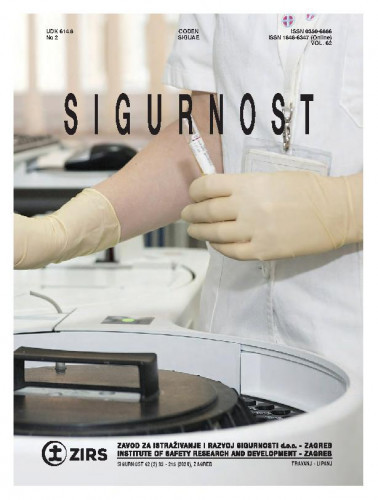Opasne kemijske tvari u raznim oblicima narušavaju kakvoću zraka u radnoj okolini. Način unošenja otrovnih tvari u ljudsko tijelo i transformacijski putovi glavni su čimbenici štetnih učinaka. Zbog velike raširenosti formaldehida u mnogim industrijama već nekoliko desetljeća pozornost stručnjaka zaštite na radu usmjerena je na taj fenomen. Studija prikazuje temeljne karakteristike formaldehida i učinke na zdravlje prouzročene izlaganjem različitim koncentracijama te opasne tvari. Težište je na zaposlenima u medicinskim laboratorijima gdje se formaldehid koristi kao sredstvo za dezinfekciju i agens za čuvanje uzoraka tkiva u anatomskim laboratorijima. Eksperimentalni dio studije odrađen je u laboratorijima Odjela za anatomiju, a razine koncentracije formaldehida praćene su u različitim prostorijama kako bi se utvrdila izloženost zaposlenika.; Chemical hazards in their various forms deteriorate the quality of air in the work environment. The way of introduction of toxicants into the human body and the transformation pathways are the main factors that influence the realization of harmful effects. Due to the high prevalence in various industries, the attention of occupational professionals working in the quality of the working environment has been directed towards formaldehyde, over the last decades. The paper presents the essential characteristics of formaldehyde and the health effects caused by exposure to different concentration levels of this hazard. Emphasis is put on employees in medical laboratories where formaldehyde is used as a disinfectant and agent for the conservation of specimens in anatomy laboratories. The experimental part of the work was carried out in the laboratories of the Department of Anatomy, where FA concentration levels were monitored in different rooms to evaluate the exposure of employees.
Sažetak

 Sigurnost : časopis za sigurnost u radnoj i životnoj okolini = Safety : journal for the safety in the work organisation and living environment : 62, 2(2020) / glavni urednik, editor in chief Željko Sven Bukovski.
Sigurnost : časopis za sigurnost u radnoj i životnoj okolini = Safety : journal for the safety in the work organisation and living environment : 62, 2(2020) / glavni urednik, editor in chief Željko Sven Bukovski.